
August 13th and 14th, the Mexican government’s export promotion arm, ProMexico, brought 12 mezcal brands into San Francisco. They were all in LA earlier in the week as well. The initiative is to open up import and distribution avenues for brands ready for the international market and most of these brands are hunting for the right partner. If you are interested in a connection, email me.
More generally I suspect that many of these mezcal brands are hungry to hear feedback from North American businesses and consumers so that they can find their way into this market fully informed so it was great to field their questions and ask a bunch of my own. The event was split into a mid-day private tasting at the Mexican embassy and a public one in the evening at La Urbana. All the brands got ample exposure to people like me and the people who are going to be buying their products.
I shouldn’t be surprised by the number of mezcal brands ready to enter the North American market but events like this serve to prove that point, and how! Most of the brands are either already established in Mexico or designed for export so they’re ready to go, just looking for a partner. The fact that they are just the first among many waves, that all save for one are from Oaxaca, and that the rather staggering production levels all point the way to a huge change in the market. It feels like shake up time is coming.
How exactly that shakes out is a real question. Everyone loves to use the tequila business as a model because, well, it’s Mexican! That would have mezcal racing to high production levels and outrageous brand campaigns to get drinkers requesting a particular mezcal for their margarita at the local bar. I’m sure that’s one avenue, it’s already happened with mezcal which has gone through the craft cocktail craze and is busily building a reputation as the new favorite of bartenders everywhere. But there’s more to it than that. Here’s wave three, or is it four, of mezcal about to hit our shores.
—
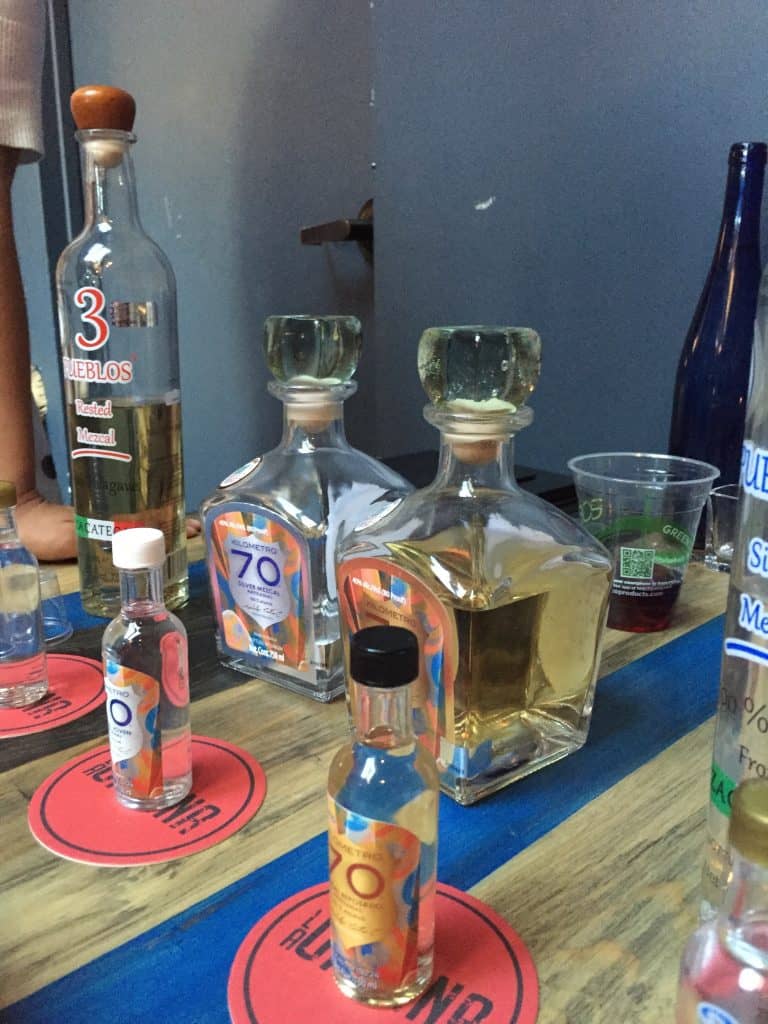
3 Pueblos and Kilometro 70
NOM Z133C
Agave: Blue agave
Denominacion de Origen: Trinidad Garcia de la Cadena, Zacatecas
Hailing from Zacatecas and the only mezcal brands from that state that Susan and I have seen in the U.S., this is something of a massive mezcal collective which represents the combined output of 30% of the mezcal from Zacatecas or 1.5 million liters per year. Yes, 1.5 million liters per year. I had a great chat with Gabriel López Nava who represents the umbrella organization for the collective called Distribuidora de Mezcales about what they’re doing, it’s quite a massive operation.
They share a NOM because their distilleries share infrastructure. Per Gabriel 3 Pueblos is an industrial operation while Kilometro 70 has its own artisanal distillery. Both come in two varieties, a joven and a reposado. The blue agave is hard to detect, Gabriel was super excited that I couldn’t figure out what it is and that experience got me thinking about how their blue agave is grown and how much terroir it represents. This shouldn’t be that surprising, Trinidad Garcia de la Cadena is just over the border from Jalisco and has a lot of that highland type landscape familiar to tequila lovers but I’m very curious to visit and see the operation in person.
File this one under a snapshot of what’s possible in the rest of Mexico in terms of raw production. This has obvious implications for the market in cocktail mezcals because 3 Pueblos is clearly designed as a mass market cocktail mezcal but Kilometro 70 has higher aspirations and can easily be more than an entry level quality mezcal. There’s something interesting going on in Zacatecas…
Both brands are currently available only in New York and Florida through Dibela Importers.
La Bendición
NOM – O212X
ABV 38%
Denominacion de Origen: Santiago Matatlán, Oaxaca
This brand is built around the story that: “A lightning bolt struck the heart of an agave, resulting in the first quema, or roasting, that produced this magical drink. That’s why mezcal is considered ‘the drink that came from heaven … a blessing (bendición) from the gods.'”
They are marketing an espadin from Santiago Matatlán which, at 38%, was the lowest ABV of anything we tried at this tasting. They appear primed for major production with a boasted production capacity of between 6,000 and 8,000 liters a month distributed across four palenques and are looking partners in North America and Europe. They also appear to have quite a handle on their marketing strategy replete with Instagram and Twittter feeds as well as a video of their process
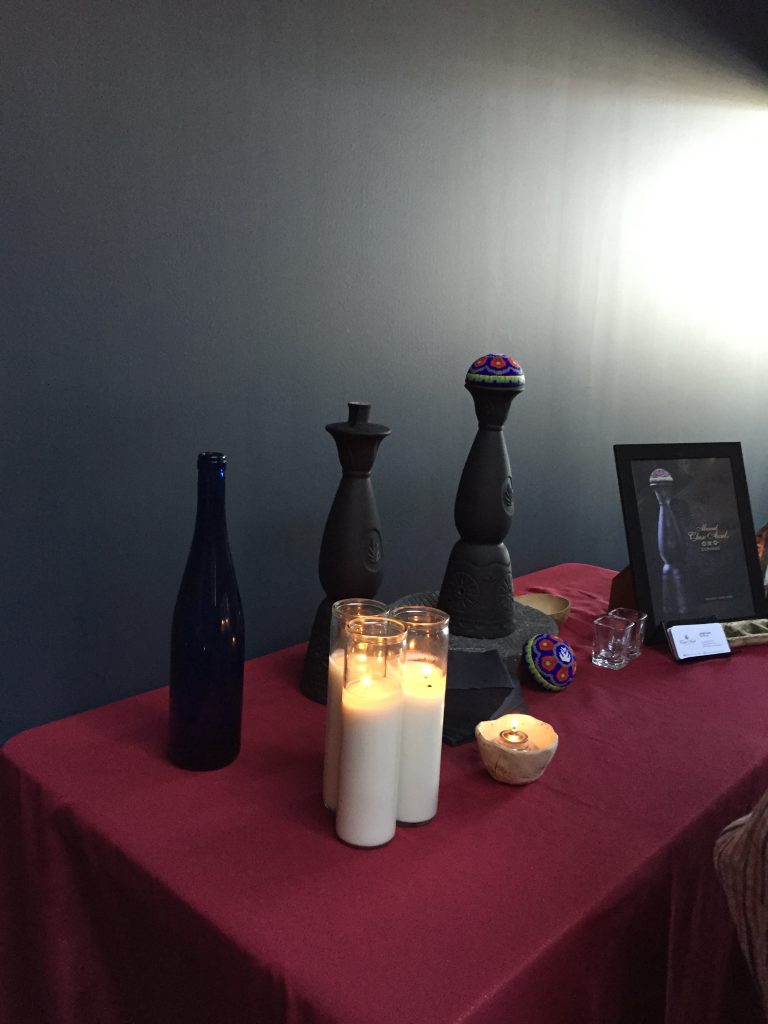
NOM D291G
Agave: Cenizo
DEN: Durango
Maestro Mezcalero: Ventura Gallegos (Author’s note: Previous I had this as Arturo Lomeli who is the founder and owner of Clase Azul. A tuned in reader asked about this in the comments which prompted us to do a bit more research and resolve this question so we’ve changed the name here.)
I finally got to taste Clase Azul’s mezcal. You know the company through their iconic tequila bottles. Now you know them by their iconic mezcal bottle, same shape painted matte black with Huichol beaded top. The presentation is striking enough to merit a taste based on appearance alone.
First, it’s from cenizo agave grown in Durango and Jalisco but the still is located in Durango so that NOM does not lie! Their maestro mezcalero Ventura Gallegos produces just 25 liters a day which makes for a tiny production run. Their first shipment of 3,000 bottles to California, Texas, and New York is already sold out. It tastes fairly light with nuanced agave fruit. I want to taste it again next to food to see if that alters the flavor. Down the road Clase Azul may expand into different mezcals, perhaps a Bacanora or Sotol. Only time will tell.
To taste it seek out mezcal oriented restaurants and bars because they’ve been the main buyers. You can buy it retail predominantly in California at stores like K&L and Old Town – NY at the Chelsea Wine Vault – New Jersey at the Monmouth Bottle Shop. This one falls into the super-premium category based on an estimated retail price of $230 per bottle.
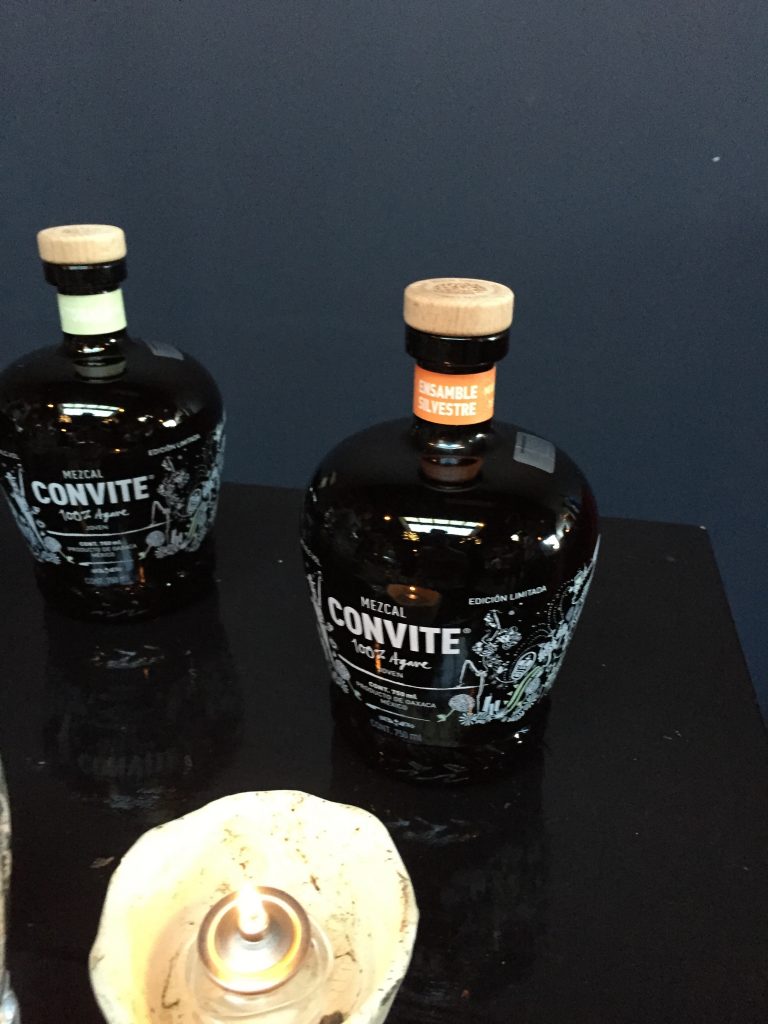
NOM O231X
Denominacion de Origen: San Baltazar Guelavila, Tlacolula, Oaxaca
Maestros mezcaleros: Hernández Martínez
Convite looks like another part of the mezcal wave. It has 10 different types of mezcal distilled by a family of four brothers from the Hernández Martínez family. It has a thoroughly developed brand identity. It’s already distributed in Mexico, Spain, and the UK. And they even have a tasting room in Oaxaca. They are definitely ready for the North American market, they’re just on the look out for an importer and distributor.
Fortunately for our palates, unfortunately for posterity, we only tasted four of their bottles which were marked by similar spice and mineral characteristics. The Ensemble Silvestre is a particularly strong example of this with prominent cinnamon notes while the tobala had flavors of sweet agave and cinnamon without much viscosity.
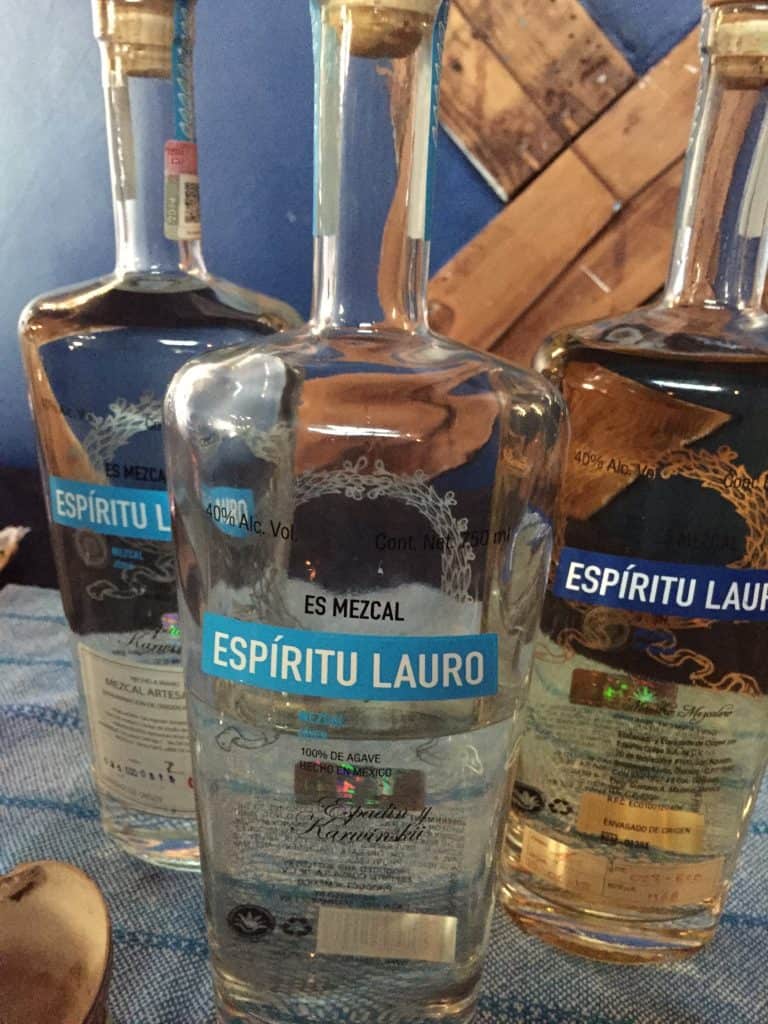
NOM O138X
ABV 40%
Denominacion de Origen: Amatengo, Oaxaca
This was another new introduction. They currently sell three bottles; a joven, reposado, and an añejo. They only use espadin today but plan to release silvestres soon. Our tasting of the joven had both of us writing down “herbal” in our notes. Smoke was hard to detect and, while the ABV is a relatively low 40%, you don’t taste the absence of alcohol.
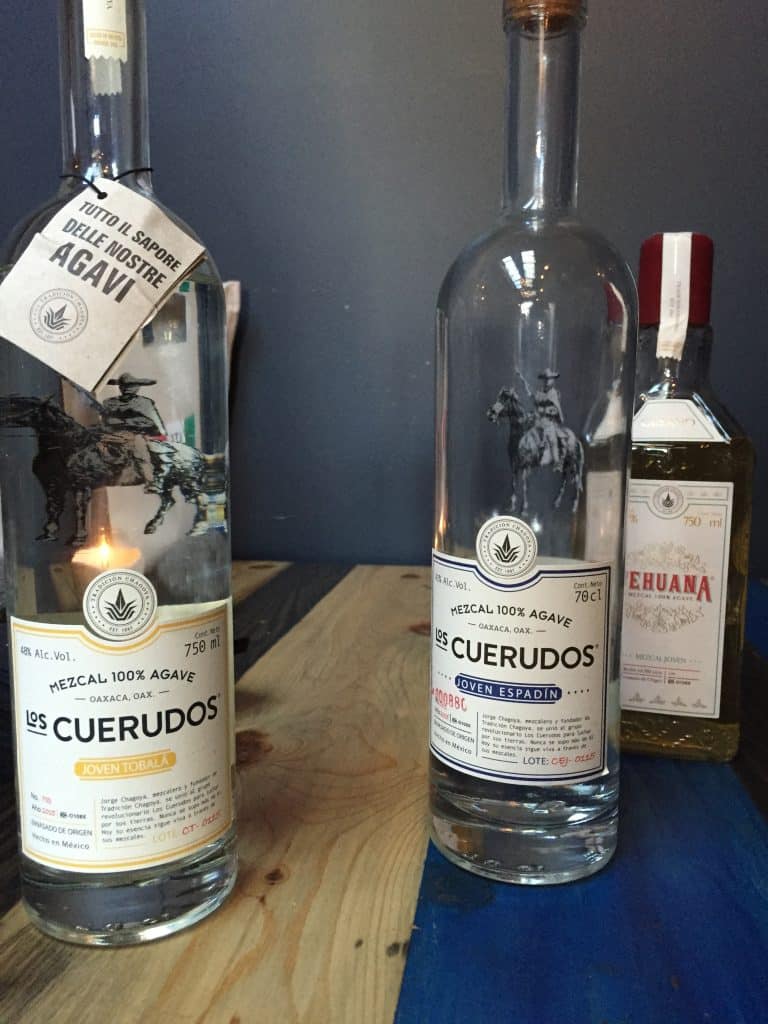
NOM O108X
Denominacion de Origen Tlacolula, Oaxaca
Boasting a familial mezcal distilling tradition dating back to 1897 one of Tradición Chagoya’s great distinctions in this tasting was the most varied set of bottles. They poured:
- 42% espadin from the Los Cuerdudos label: A really strong, forthright, bottle of espadin.
- 48% toabala from the Los Cuerdudos label: Incredibly fruity nose that makes you think it will fill your mouth but it’s not overwhelming in the least.
- 40% espadin con gusano from their Tehuana label: The gusano flavor is very light on this one. It’s light and a very bright expression of the gusano idea.
- 46% Donaji Ensamble of espadin and cuische: A very hot mezcal with strong cinnamon and hot pepper flavors.
- Olla de Barro at 46%: This one had the great minerality you’d expect.
They are looking for a North American distributor.
NOM O176X
San Pablo Huixtepec, Oaxaca
Maestro mezcalero: Don Fortino Ramos
The only mezcal claiming kosher certification at this tasting and of any in my memory Mezcal IBA featured two bottles, the 40 and the 55, as in ABV percent. The 55 runs right up against what the CRM legally allows in an ABV so, should they find an importer, it would attain the distinction of one of if not the mezcal with highest ABV in the United States.
As with many high alcohol mezcals you don’t feel the alcohol of the 55 so much as taste more. It has a huge mouth feel without viscosity and it’s very flavorful. The 40 is much lighter and reveals carmelized notes. This is one case where we fear that tasting the 55 first may have washed out our palates so we intend on retasting the 40 first at the next opportunity that presents itself.
Mezcal Los Javis and Mezcal Derrumbes
NOM O134X
Los Javis has a completely throw back label that wouldn’t be out of place on a rot gut tequila or mezcal but that’s just because it comes from the same design era. The actual contents of the bottles are quite remarkable with their standard espadin representing the blade-leafed agave quite competently and a line of silvestres that demand a close look and multiple tastings. There is some serious mezcal in those bottles, we’re really looking forward to seeing them on the market.
The same mezcalero has been developing the Derrumbes brand with a much more contemporary label featuring abstract designs based on traditional pre-Columbian patterns. Derumbes will almost definitely come to the United States soon, we’re just not sure exactly when. Both brands are represented by Epic Wines.

Maesto mezcalero Pedro Hernandez
Koch is the lone member of this group which will definitely be on shelves soon. The family scion Carlos Moreno is working with Fidencio’s Arik Torren to bring the line to the U.S. Arik has a eye for mezcal starting with Fidencio and last year’s collaboration with Esteban Morales to bring Raicilla Venenosa to the United States so look out for this one. This is a huge line with 12 bottles spanning the complete gamut of silvestres, an espadin, and a methodological variation in the Olla de Barro. The comparisons to Real Minero aren’t too far off. The Moreno family has invested heavily in sustainable replanting, high quality production, and maintaining their traditional methods. And it shows.
The U.S. release should be this month.
NOM O265X
ABV: 40%
Marcavidas has easily the strangest mezcals of this bunch. One, in a red bottle, is the Afrodisíaco which is twice distilled espadin and then damiana, a traditional culinary and medicinal herb in Mexico, is added in the third distillation. Damiana is occasionally referred to as “marijuana’s legal cousin” but it is used widely in medicinal tinctures and there’s some claim that a damiana distillate or infusion took the place of Triple Sec in the original margarita so there’s some history of a relationship with mezcal. Marcavidas’ use of damiana in Aphrodisiac makes for a very herbal flavor.
But if you’re into herbal flavors then definitely try Marcavidas’ espadin which is the most herbal pure mezcal we’ve ever tasted. At first sip I thought it was surely infused with hierba santa if not other local Oaxacan herbs. Both Susan and I had to ask a few times to make sure that it wasn’t infused. We’re still scratching our heads over how you could get that much herbaceousness into a bottle of mezcal without additives. It’s sort of like an over-hopped IPA.
NOM F236D
ABV 40%
Maestro mezcalero Jaime Sernos
Denominacion de Origen: Matatlán, Oaxaca
Geometric designs on bottles are in, both Tribal and Derrumbes sport eerily similar motifs inspired by Mesoamerican work but Tribal has a distinctive coin shaped bottle and a different approach. As their brand representative told me, the goal is to create “modern art in a bottle” but it reflects local traditions. The black glass is inspired by the black ceramics of Coatepec, Oaxaca and the colored patterns by alebrijes from San Antonio Arrazola, San Martin Tiljajete, and other local towns. They are looking for an importer / distributor to introduce them to the North American market.
As for what’s in the bottles: They have an espadin joven at 40% and an espadin reposado at 37%. They come across as very light and smooth which may have nothing to do with the ABV, they just seem like they were distilled to that flavor set. The reposado seems inspired by lighter tequila style repos with the emphasis on touches of carmelization rather than scotch like smoke.
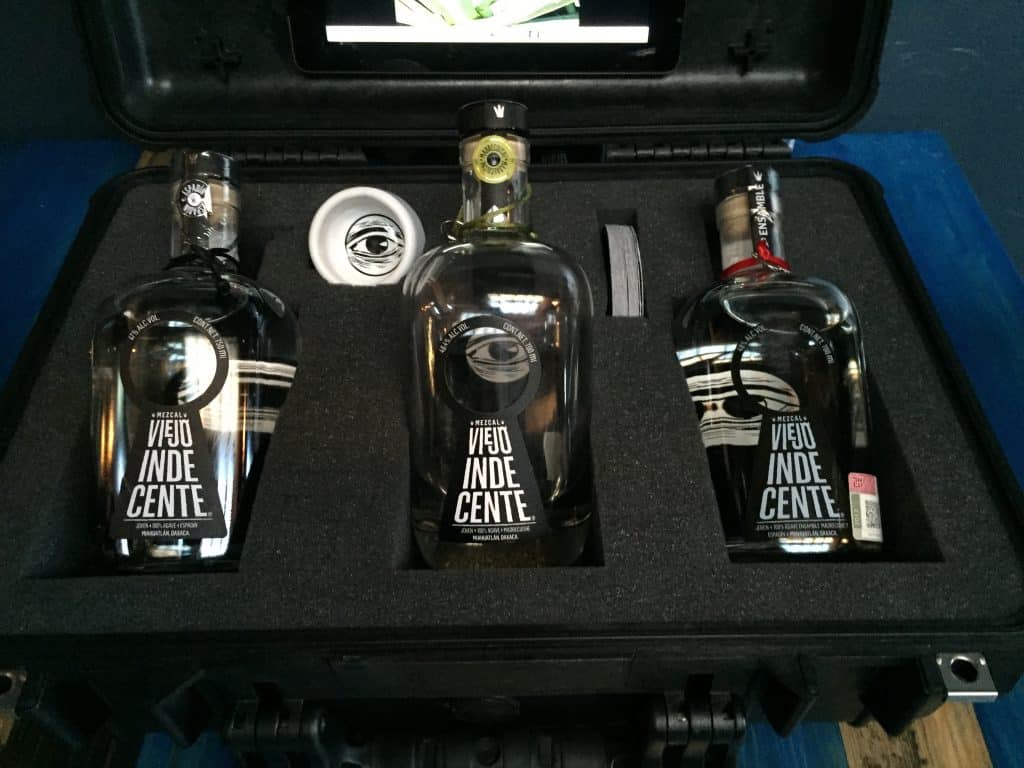
NOM O253X
Maestro mezcalero: Jóse Lucas and family
Denominacion de Origen:Mihuatlán, Oaxaca
Indecente wins the design and complete brand identity award of this group, and their mezcals are more than worth trying so they have at least two things going for them. You have to admire the look of the bottle, at tastings they come in custom brief cases, they also come with a complete story which I’ll cite here because it’s a rather inspired bit of marketing:
MOST OF THE TIME, WE HIDE BEHIND A CLOSED DOOR AND ONLY PEEK TROUGH THE KEYHOLE ONCE IN A WHILE. THE ONE ON THE OTHER SIDE OF THE KEYHOLE IS YOU.
MEZCAL VIEJO INDECENTE GIVES YOU THE KEY TO OPEN THE DOOR AND BE YOUR OTHER SELF…
AT LEAST FOR A LITTLE WHILE.
The eye peeking through the keyhole is reproduced on the bottle with the keyhole on the front of the bottle and eye on the back to neat effect.
As for the mezcal, currently they are shipping three varietals: An espadin at 45%, a madrecuische at 48.4% made from 15 year old agave, and an ensemble made from espadin and madrecuische at 48%. They are planning additional silvestres sometime soon. All the fruit is grown on the Lucas family estate which ranges across 136 acres and has been in the family for somewhere north of 100 years. The whole operation is trying to keep up with demand but, per Indecente’s Gabriel Pacheco, “it’s important to know that we will never be able to fulfill huge volumes, our philosophy is focused on quality and small batches.” To that end they’ve been planting about 10,000 ihuelos for the past two years running using a polyculture method where beans and corn are grown between rows of agave which are themselves composed of mixed species.
Park Street represents Indecente in their first three markets starting with the espadin in California and Florida today. It will be on the market in New York in mid-October. The ensemble should arrive by Christmas, the madrecuische soon thereafter. But, give their online store a shot and see if you can get it shipped to you directly. They also mentioned a very intriguing 25-year-old Mexicano and a 22-year-old Arroqueño which may be available later this year. Both will have higher price points reaching, perhaps, $200 per bottle.
The espadin has the barest hint of smoke and a flavor set focused on olla type minerality and elegant agave fruit. The ensemble has more of that olla type minerality but a really massive mouth feel bursting with ripe agave sugars. I wonder if that would be a better dessert or entree mezcal, I look forward to trying it out.

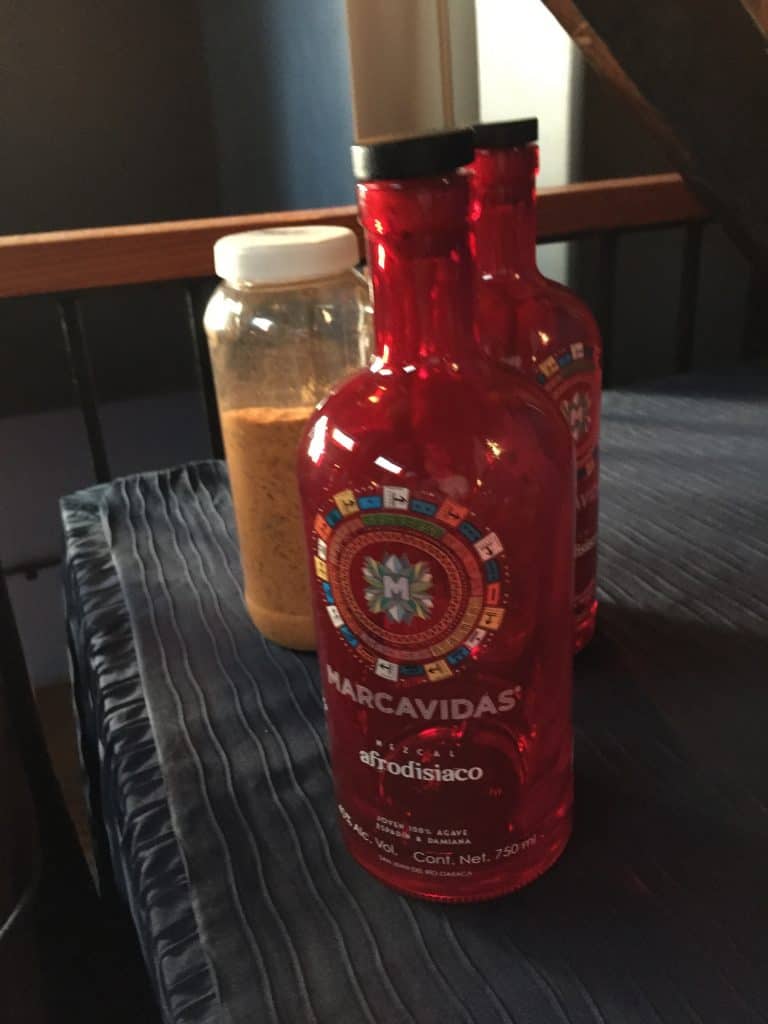
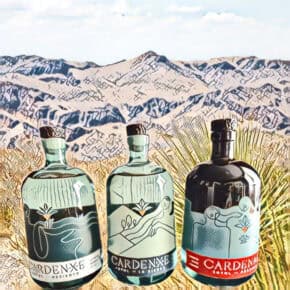

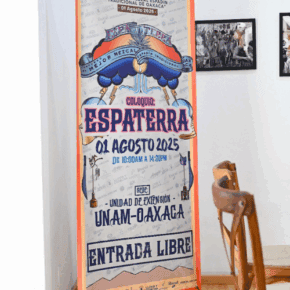








Guys, great write-up and thanks for the report! There is some really good stuff here. I have a few of these brands but looks like a big cash outlay will be coming as more of these arrive! Good thing we are renovating our apartment to create some cool mezcal shelving!
Keep up the amazing work!
John
Awesome, thanks John! You point out a great article topic, infrastructure investment for mezcal collections!
re: Clase Azul mezcal
Isn’t Arturo Lomeli just the brand owner of the tequila and mezcal brand of the same name? Could be wrong perhaps he is the master distiller…
Hi Michael, I’m reporting what the Clase Azul brand representative told me when I met him at that tasting in August so I’ll double check and see if I can find out.
Hi Michael, Ends up that you were correct. Arturo Lomeli is the owner and founder of Clase Azul tequila and mezcal. He is not the master distiller but he verifies the quality of the products all the time. The name of the maestro mezcalero is Ventura Gallegos. I’m updating my blog post accordingly, thanks for bringing that up!
Interesting and strange at the same time. It seems this master distiller’s stuff was released under Wahaka’s VM series. Even though Clase Azul has steadfastly said that this Clase Azul release was “very limited” can’t help but notice there is bottles being sold all across the US and even in Canada… call me a skeptic in this day in age of the mezcal universe
http://www.agavessilvestres.org/vinos_de_mezcal/namero-8
it might be strange to some… but adding Damiana to Mezcal is not new at all. In Guerrero this is very popular…